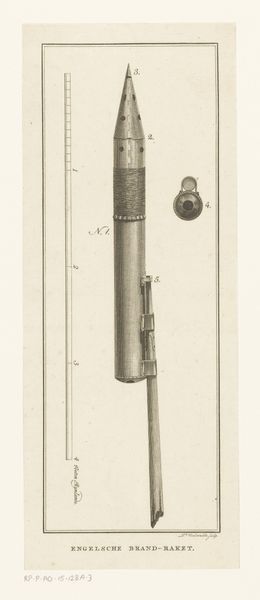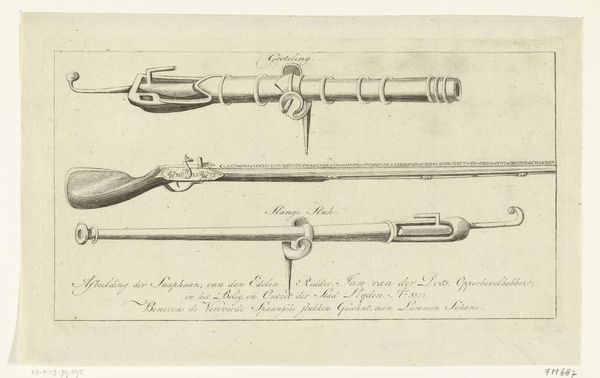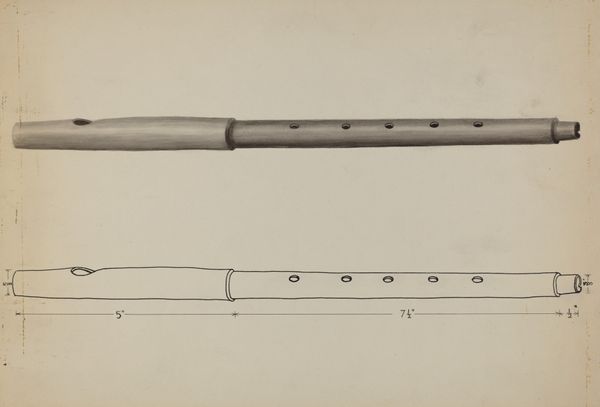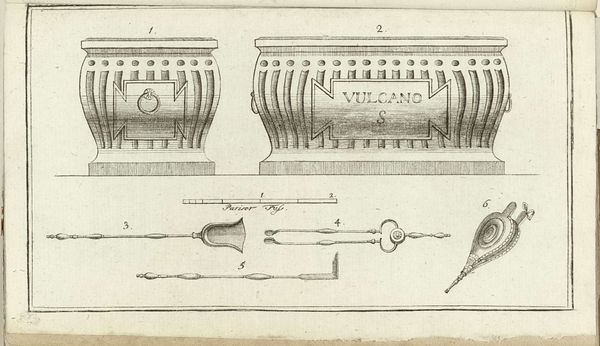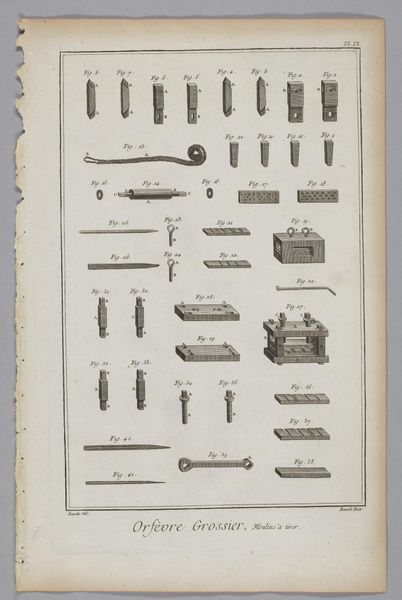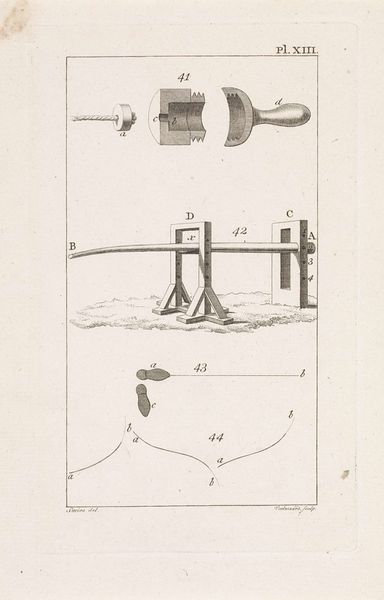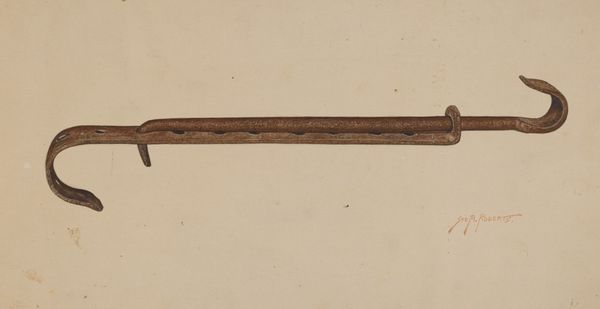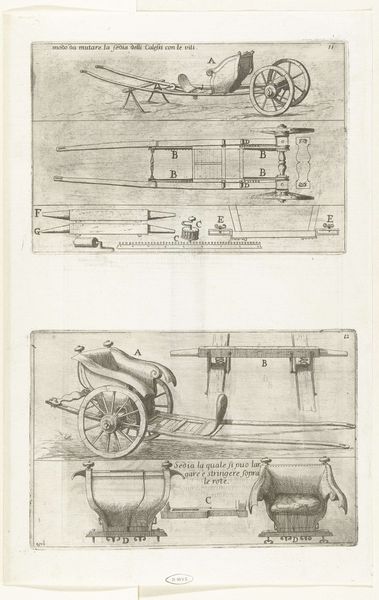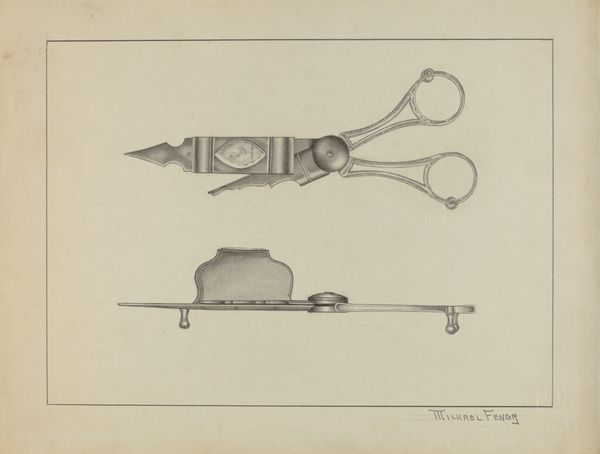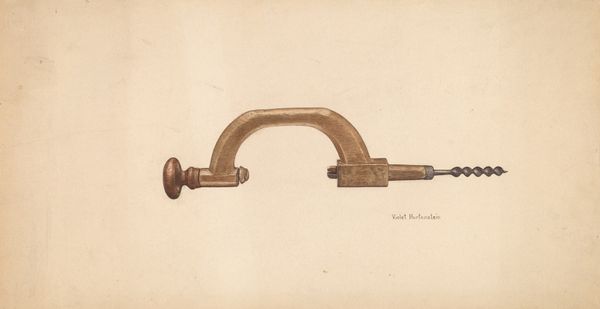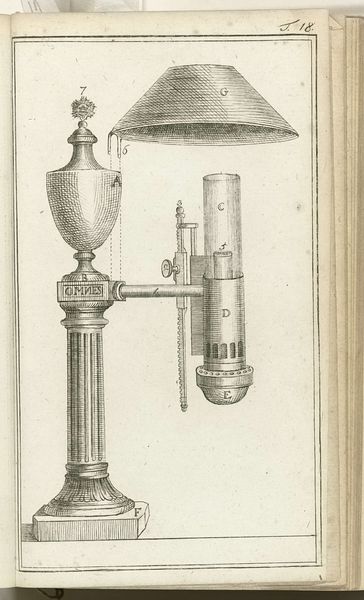
Congreveraket, mogelijk gebruikt door de Engelsen bij het bombardement van Vlissingen, 1809 1809 - 1810
0:00
0:00
drawing, print
#
drawing
#
neoclassicism
# print
#
history-painting
#
academic-art
#
watercolor
Dimensions: height 123 mm, width 269 mm
Copyright: Rijks Museum: Open Domain
Curator: I find myself oddly captivated by the cool precision of this image. It’s so…measured. Editor: That's exactly what struck me first. It feels cold, almost clinical. Like looking at an architect's rendering for a particularly unfriendly contraption. Curator: It’s an anonymous drawing from around 1809-1810, held here at the Rijksmuseum. It depicts what's believed to be a Congreve rocket, a weapon potentially used by the English during the bombardment of Vlissingen. Editor: Oh, a weapon of war! Now that context gives that chilling feeling some substance. The precise lines, the neat numbering – it's all so detached from the human cost, isn't it? I almost imagine myself sketching out ideas, how it might actually sound if ignited... Curator: Indeed. This work offers insight into the history of military technology and the Industrial Revolution's impact on warfare, but let's remember it's just an element. Think about the socio-political context: England and France locked in a struggle for dominance, technological innovation driven by imperial ambitions…It’s a depiction of how these grand narratives impacted individual lives and places like Vlissingen. Editor: That adds a weighty layer, definitely. I was lost in the sheer aesthetics, how a piece of technology could somehow look classical. But yes, underneath there's that tension—innovation in service of destruction. Makes one consider present implications. Curator: Precisely. The object itself represents a point of departure into thinking about issues like imperialism, power, violence. Also, consider whose stories are typically omitted. The bombardment would have drastically affected civilians. But where are their representations in popular visual culture of that time? Editor: It gives me chills. You have shifted my focus to what is absent rather than present in that artwork. All I see now are the possibilities behind the story: lives upended. Curator: Reflecting on absences allows us to develop far more holistic, nuanced understandings of history. Editor: Absolutely. Makes this otherwise technically beautiful, almost sterile drawing so much more...alive, really. Heavy. Curator: An excellent and necessary weight to carry. Editor: Precisely, this picture demands engagement, not mere aesthetic enjoyment.
Comments
No comments
Be the first to comment and join the conversation on the ultimate creative platform.
